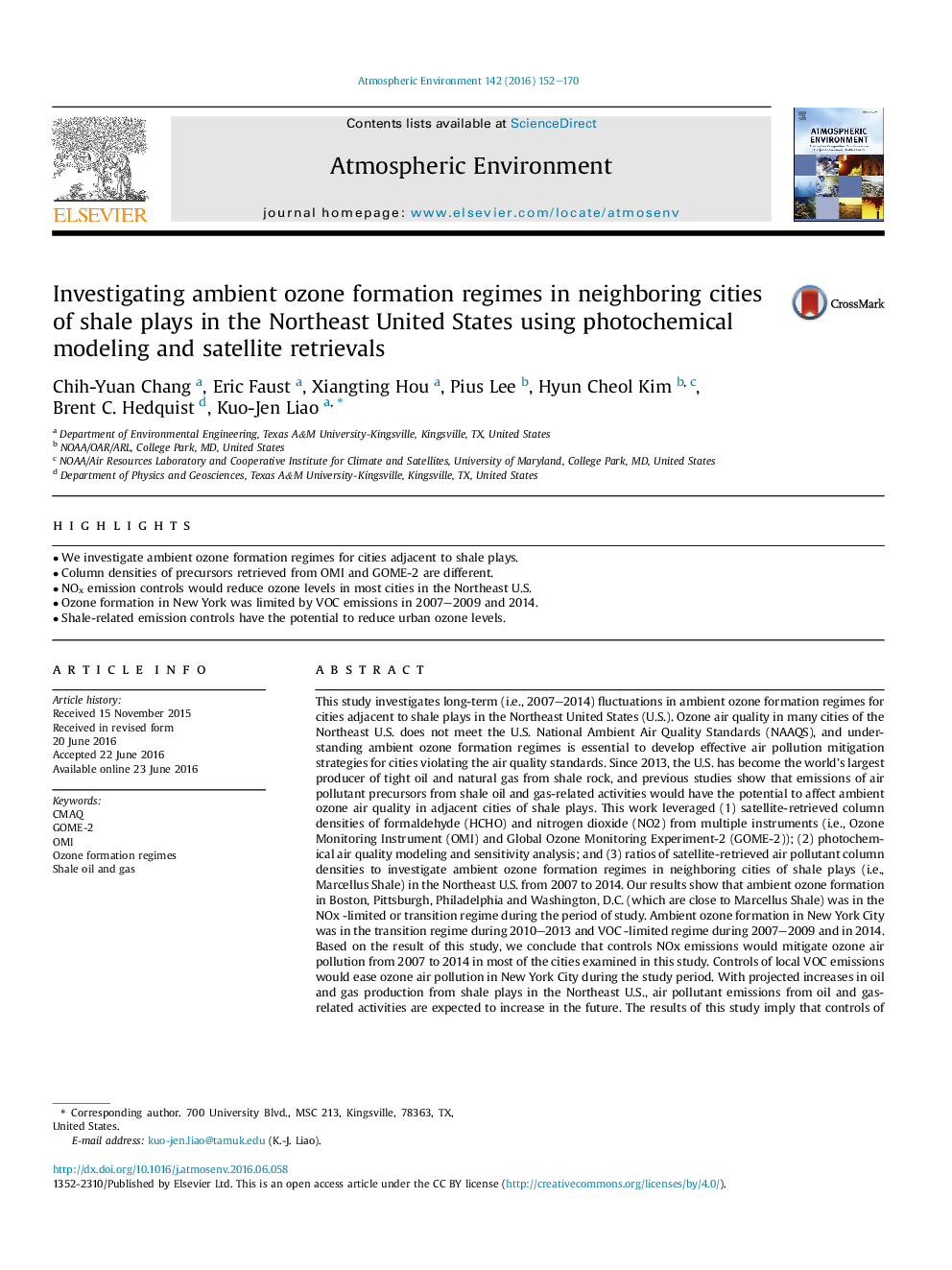| Article ID | Journal | Published Year | Pages | File Type |
|---|---|---|---|---|
| 6335743 | Atmospheric Environment | 2016 | 19 Pages |
Abstract
This study investigates long-term (i.e., 2007-2014) fluctuations in ambient ozone formation regimes for cities adjacent to shale plays in the Northeast United States (U.S.). Ozone air quality in many cities of the Northeast U.S. does not meet the U.S. National Ambient Air Quality Standards (NAAQS), and understanding ambient ozone formation regimes is essential to develop effective air pollution mitigation strategies for cities violating the air quality standards. Since 2013, the U.S. has become the world's largest producer of tight oil and natural gas from shale rock, and previous studies show that emissions of air pollutant precursors from shale oil and gas-related activities would have the potential to affect ambient ozone air quality in adjacent cities of shale plays. This work leveraged (1) satellite-retrieved column densities of formaldehyde (HCHO) and nitrogen dioxide (NO2) from multiple instruments (i.e., Ozone Monitoring Instrument (OMI) and Global Ozone Monitoring Experiment-2 (GOME-2)); (2) photochemical air quality modeling and sensitivity analysis; and (3) ratios of satellite-retrieved air pollutant column densities to investigate ambient ozone formation regimes in neighboring cities of shale plays (i.e., Marcellus Shale) in the Northeast U.S. from 2007 to 2014. Our results show that ambient ozone formation in Boston, Pittsburgh, Philadelphia and Washington, D.C. (which are close to Marcellus Shale) was in the NOx -limited or transition regime during the period of study. Ambient ozone formation in New York City was in the transition regime during 2010-2013 and VOC -limited regime during 2007-2009 and in 2014. Based on the result of this study, we conclude that controls NOx emissions would mitigate ozone air pollution from 2007 to 2014 in most of the cities examined in this study. Controls of local VOC emissions would ease ozone air pollution in New York City during the study period. With projected increases in oil and gas production from shale plays in the Northeast U.S., air pollutant emissions from oil and gas-related activities are expected to increase in the future. The results of this study imply that controls of ozone precursor emissions from shale oil and gas-related activities could be a potential strategy for reducing ambient ozone formation in cities adjacent to the shale plays in Northeast U.S. in the future.
Keywords
Related Topics
Physical Sciences and Engineering
Earth and Planetary Sciences
Atmospheric Science
Authors
Chih-Yuan Chang, Eric Faust, Xiangting Hou, Pius Lee, Hyun Cheol Kim, Brent C. Hedquist, Kuo-Jen Liao,
